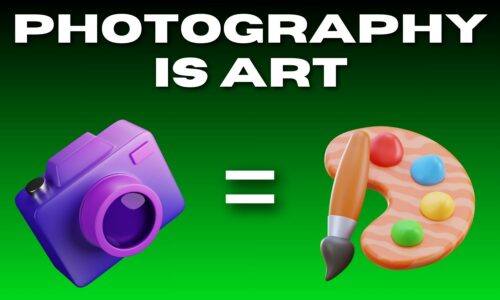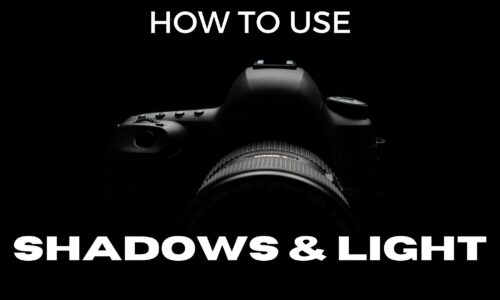What Are Some Photography Skills You Should Be Good At
Photography involves a lot more than just taking high-quality pictures.
So, as you grow as a photographer, you have to ask yourself – “What are some photography skills should I be good at?”
Because as a beginner or someone starting a photography career, you need to learn many photography skills to excel in this field.
There are technical skills, composition skills, and creative skills.
Combining ALL these specific photography skills is the best way to create beautiful images that resonate with people and tell a story.
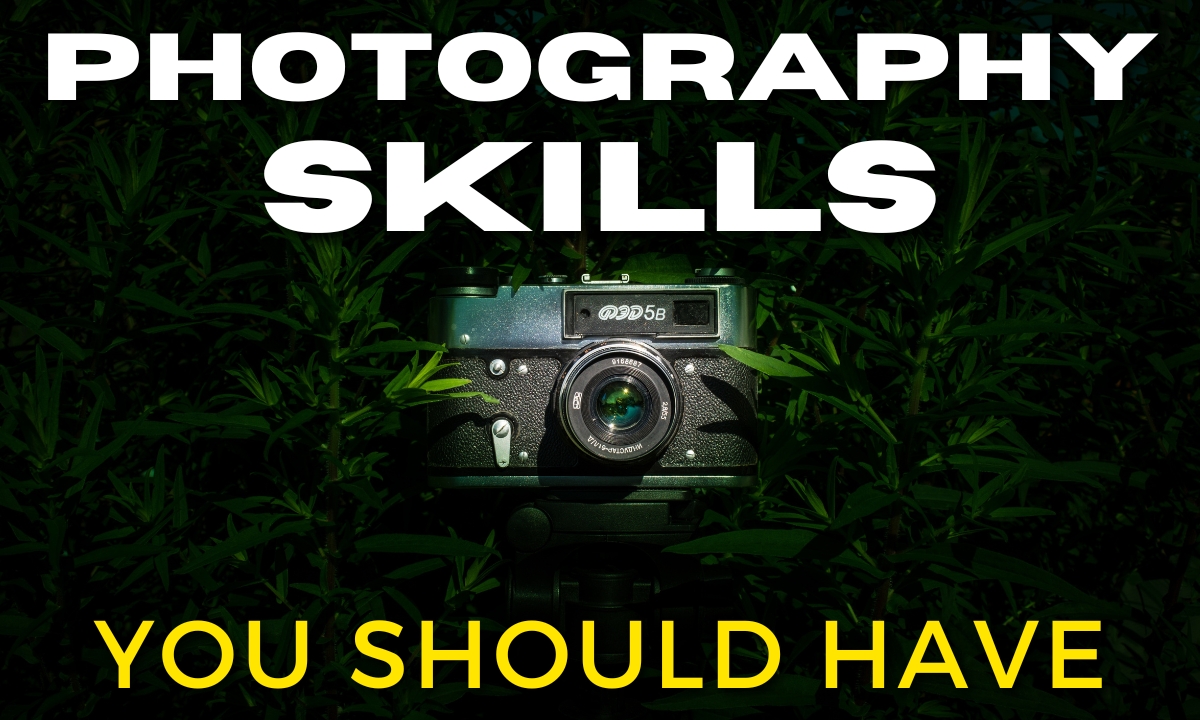
Because no photographer has ever built an impressive professional portfolio without practice.
So, keep experimenting with different techniques and seek inspiration from other photographers. This will help you grow and refine your craft.
Now, let’s review 11 important photography skills you can work on to start mastering your craft!
11 Photographer Skills You Should Be Good At
1. Photography Equipment
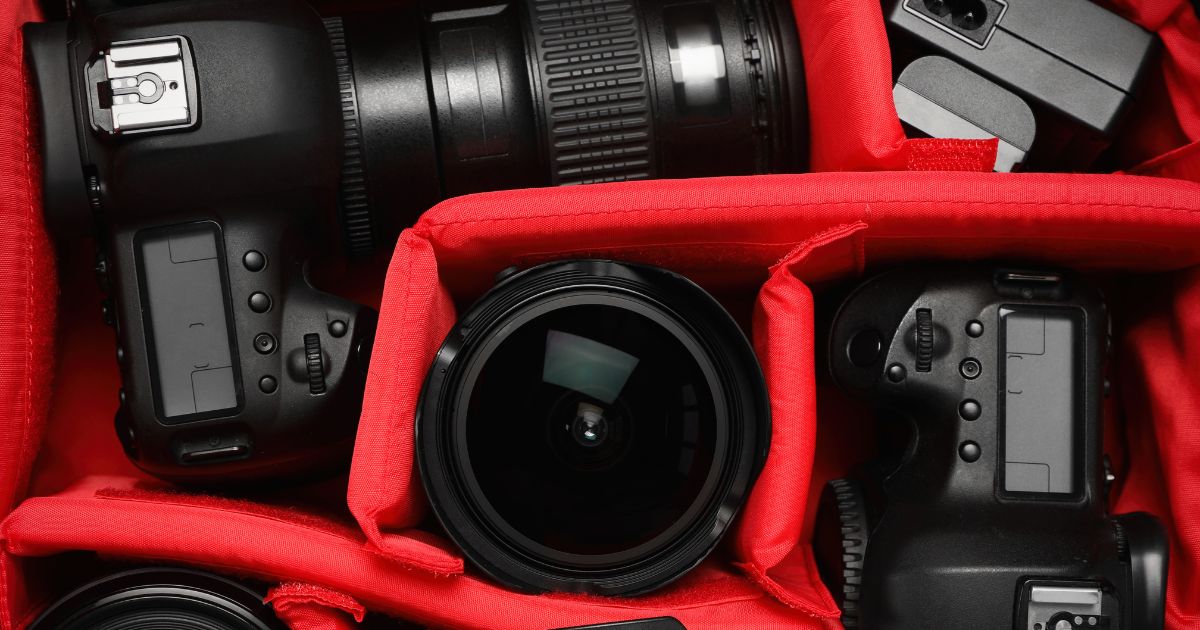
Essential Gear for Photographers
As a photographer, mastering your craft requires various camera equipment.
Some of the must-have photographic equipment include:
- Cameras: The first step to becoming a skilled photographer is knowing your camera. Whether you prefer digital cameras, film cameras, or a DSLR camera, your choice of camera should be the first thing you become fluent in operating.
- Lenses: Every lens is different. They’ll all give you a different effect and focal length, which you’ll eventually use to enhance the quality of your photos.
- Tripods: A stable tripod allows for sharper images, long exposures, and improved composition.
- Lighting Equipment: Having good lighting equipment, the technical skills to operate it, and knowledge of various lighting techniques will help you take high-quality photos regardless of your location.
- Camera Bag: A sturdy bag or travel case will keep your gear organized, safe, and easily accessible during shoots.
When to Invest in New Camera Equipment
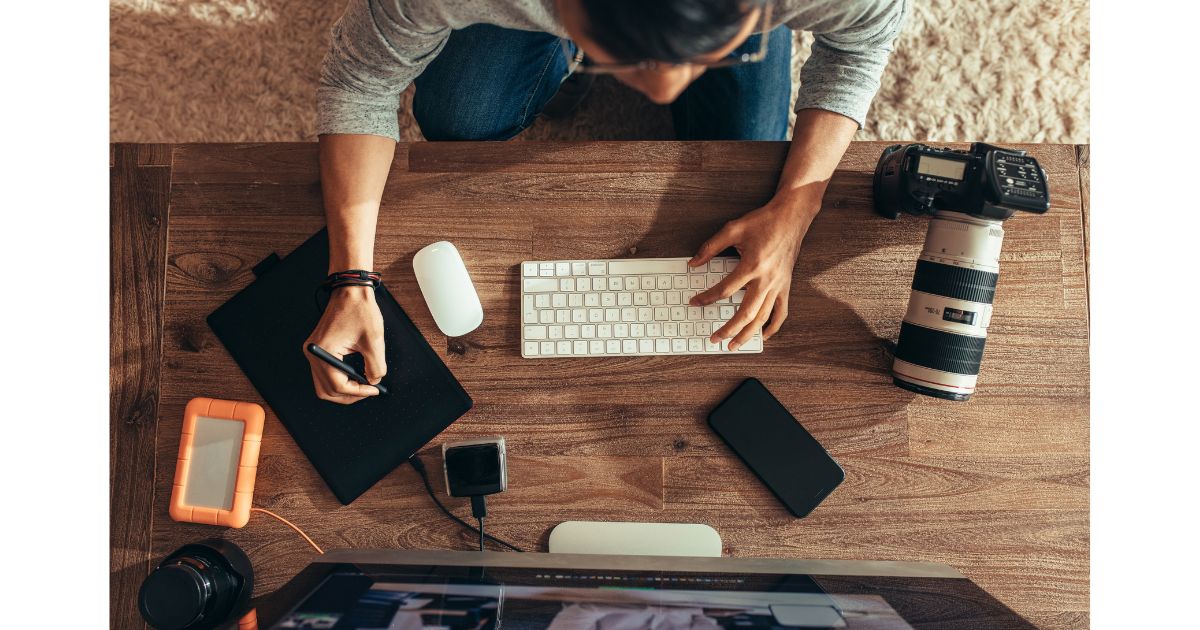
Knowing when to upgrade your equipment is one of those “you’ll know when you know” situations. I can’t tell you when you should buy new gear, but based on my experience, I’ll give you a few “signs” to look out for before making another purchase.
You’ll know it’s time to invest in new gear when your current photographic equipment stunts your growth. As your skills develop over time, you’ll eventually get to a point where you want to capture a certain image, and you’re doing everything you can with the resources you have to get the shot you want.
But no matter how much you:
- Change your camera settings
- Shoot from a different angle
- And move your lights
You can’t seem to get the right outcome.
THIS is how you know it’s time to upgrade your equipment!
Not when you tried shooting for 20 minutes, watched 2 YouTube videos, and you just bought your camera three months ago.
It’s when you’ve exhausted all options with what you already have, and you know what you’re trying to do isn’t just a learning curve anymore. It’s the cheap flash your mom bought you from Walmart, and it’s a pain in the butt because the disposable batteries keep dying!
Maintenance and Care for Your Equipment

Taking care of your photographic equipment will extend its lifespan and maintain performance quality. Here are some tips for keeping your gear in tip-top condition:
- Clean Your Cameras and Lenses Regularly: Dust, dirt, and moisture can affect image quality and damage your equipment. Use a soft brush, lens cleaning solution, and microfiber cloth to clean your gear gently.
- Store Your Equipment in a Protective Case: A padded, weather-resistant bag can shield your items from being damaged by rough handling or extreme conditions.
- Avoid Extreme Temperature Changes: Keep your gear away from direct sunlight or freezing temperatures to prevent potential damage to batteries and camera sensors.
- Inspect Your Gear Periodically: Check your equipment regularly for signs of wear and address any issues before they worsen.
With the right photography equipment, proper care, and timely investments, you can continue to hone your creative photography skills and take amazing pictures!
2. Hardware
Anytime you get a new camera, you should refer to the camera manual and read up… or skim through it and watch some in-depth YouTube videos (this is what I do).
Every once in a while, in my free time, I’ll pick up a manual for one of my pieces of equipment and flip through the pages. And eventually, I’ll find myself saying, “Whaaat? My camera can do that? My flash can do this?”
Camera Types and Camera Equipment
There are multiple camera types available, such as DSLR, mirrorless, and point-and-shoot cameras. It’s great to read the manual for your camera and watch YouTube videos about it.
But nothing beats using it.
Practicing is the best way to get familiar with your gear!
Take mental notes on what each button can do and how to change the settings. You want to familiarize yourself with various camera settings and photographic equipment.
As you gain experience, you’ll get a better understanding of the equipment that works best for you and your style of photography.
Lens Selection and Its Impact on Photography
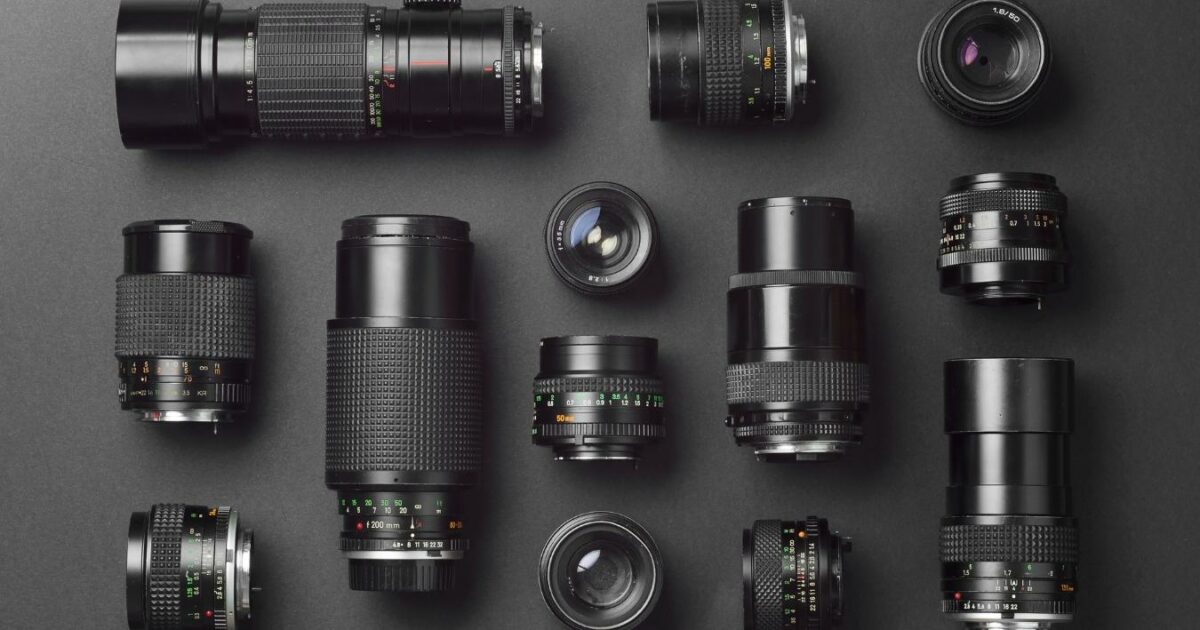
Your lens selection will significantly influence the outcome of your photos.
Different lenses serve diverse purposes, including wide-angle, telephoto, and macro photography. By recognizing the effects of lens selection on your images, you can make more informed decisions and improve your photography skills.
Using Tripods and Stabilizers
Stability is crucial for capturing clear, sharp images.
Using a tripod helps eliminate camera shake, so your images are super crispy!
Stabilizers, such as gimbals, are useful for capturing smooth video footage or getting shots at a different or extended angle.
Understanding Lighting Equipment
Lighting is super important for producing professional, high-quality photos.
As a photographer, it’s great to be well-versed in using lighting equipment, such as flash units, softboxes, and reflectors. Knowing how to use lighting equipment to manipulate light will be your superpower!
3. Technical Knowledge and Skills
Understanding The Exposure Triangle
The exposure triangle comprises three elements: ISO, shutter speed, and aperture. Understanding how these elements interact is crucial for capturing high-quality photographs.

- ISO determines your camera’s sensitivity to light. A higher ISO allows you to shoot in low-light conditions, but it may introduce noise to your photos.
- Shutter Speed controls how long your camera’s sensor is exposed to light. Fast shutter speeds freeze motion, while slow speeds can create motion blur.
- Aperture affects the amount of light entering your camera and the depth of field. A wider aperture (lower f-stop) lets more light in and creates a shallow depth of field. While a narrower aperture (higher f-stop) lets less light in and results in a deeper depth of field.
By adjusting these settings, you can achieve the desired exposure and creative style for your photos.
Mastering Manual Mode on Your Camera
You’ll need to take control of your camera’s manual mode at some point in your photography career.
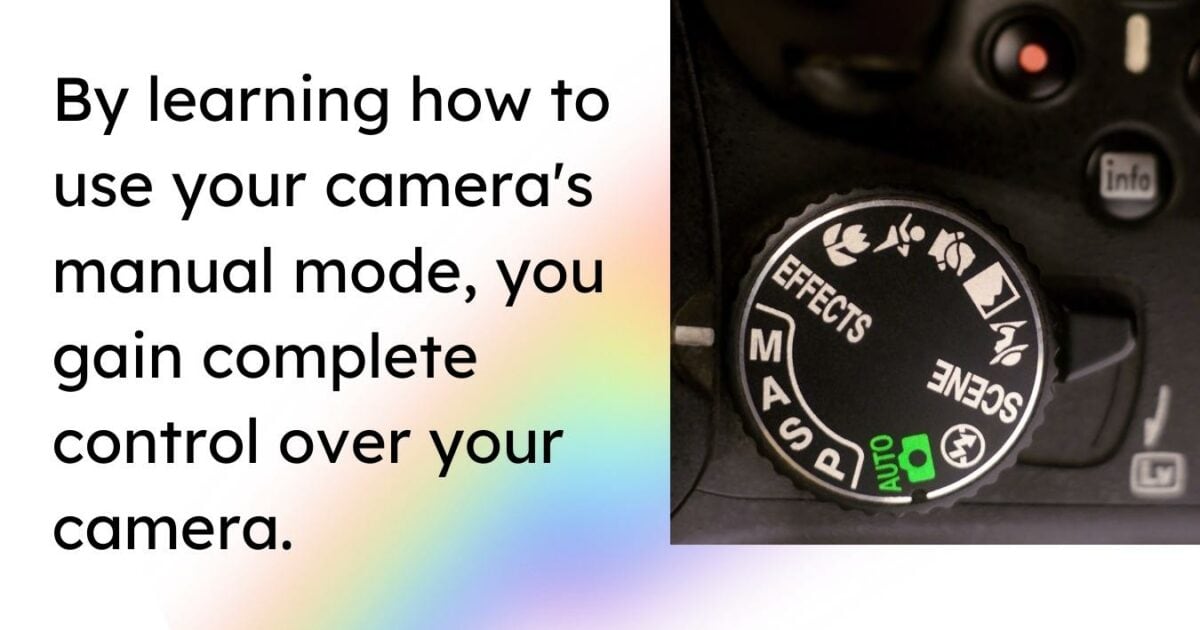
With manual mode, you can control exposure settings and try various combinations of ISO, shutter speed, and aperture. Knowing these settings will help you take better photos in different situations.
To master manual mode:
- Familiarize yourself with your camera’s controls and menu system.
- Learn to read the exposure meter to determine if your image is properly exposed.
- Practice adjusting ISO, shutter speed, and aperture to achieve the desired exposure.
Technical Aspects of Lighting
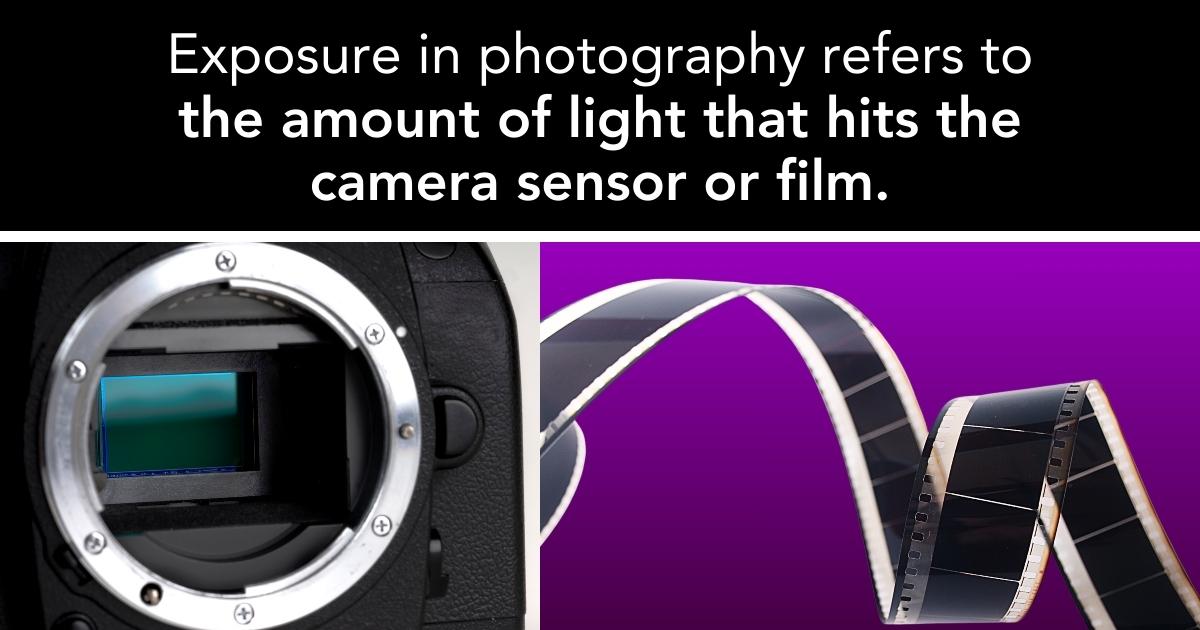
Lighting plays a significant role in the quality of your photos. To improve your photography, it’s important to learn lighting techniques and your photographic equipment well.
- White Balance: Learn to adjust your camera’s white balance settings to achieve accurate color representation in different lighting conditions.
- Depth of Field: Understand how aperture and focal length affect the depth of field. Then, use this knowledge to create the desired focus and background blur in your images.
- Focusing: Master various focus modes and techniques. For example, autofocus, manual focus, and focus tracking to ensure your subjects are sharp and well-defined.
Try experimenting with different light sources, modifiers, and positioning to create a range of effects and moods in your photos.
4. Composition and Creative Skills
Understanding the Rule of Thirds

The Rule of Thirds is a fundamental principle in composing visually appealing photos.
Imagine your frame divided into nine equal parts by two equally spaced horizontal lines and two equally spaced vertical lines. Place your main subjects along these lines or at the intersections to create a balanced and engaging photo.
The Rule of Thirds helps draw attention to your subject and adds depth to your composition.
Mastering the Art of Framing
Framing is another essential aspect of photo composition.

It involves using elements in your scene to create a frame within the frame that highlights your subject. This technique provides context, adds interest to your composition, and guides the viewer’s eye to the main subject.
You can use various elements, such as doorways, arches, or tree branches, to create a natural frame in your photos.
The Importance of Symmetry and Patterns
Incorporating symmetry and patterns in your photo composition adds a sense of balance and harmony to your images.
Symmetrical scenes can create eye-catching photos, especially with a centered composition.
Patterns or repetitive elements can make a photo more interesting. When photographing a scene with patterns, look for opportunities to break the pattern to create an additional focal point.
The Role of Depth in Composition
To make your photos feel more three-dimensional and inviting, add depth to your composition. One way to achieve this effect is by including foreground interest and layering your scene with different elements.
This technique not only helps guide the viewer’s eye through the image but also provides a sense of scale and perspective. Experiment with different angles, camera settings, and focus points to enhance the sense of depth in your compositions.
5. Attention to Detail
The Importance of Minute Details in Photography

Attention to detail is a key photography skill you can develop.
It’s what separates the good from the GREAT!
In photography, capturing sharp images and getting the right composition often rely on the smallest elements.
Both artificial light and natural light have a significant impact on your photos. So, you need to consider how they interact with your subject.
As a photographer, being attentive to these details will enhance your ability to create images others will love.
How to Train Your Eye for Details
Developing your attention to detail in photography requires practice and patience.
Here are some suggestions to improve this skill:
- Spend time observing your surroundings and look for subtle changes in light, texture, and patterns.
- Practice taking photos from different angles and distances. This will help you understand how each perspective affects your results.
- Experiment with various lighting techniques. For example, hard shadows or soft, warm, or cool temperature lights.
- Learn how to anticipate and capture quick moments that would generally go unnoticed.
- Stay positive and be open to constructive feedback from others. Doing so will help you grow and refine your skills.
Attention to Detail in Post-Production
Paying close attention to detail also helps with post-production.
Mainly cutting down on the time needed to edit and retouch your photos to further enhance their visual appeal.
Some things to keep in mind when working on your images in post-production include:
- Carefully review each image and adjust for exposure, contrast, and color balance.
- Remove any unwanted elements or distractions, like dust spots or stray objects, that detract from the main subject.
- Use selective editing tools, like masking or layering, to fine-tune specific areas of your image without affecting the overall look.
- Strive for consistency in your editing style, which can help create a cohesive body of work that showcases your unique artistic vision.
6. Software
Recommended Post-Production Tools
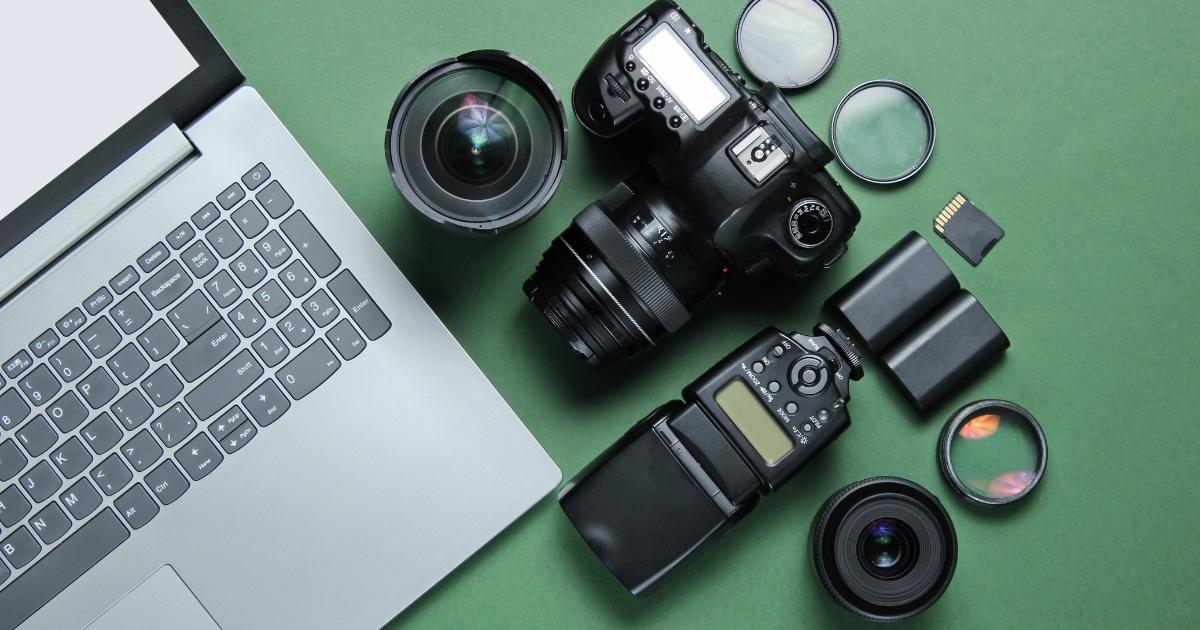
In today’s digital photography world, you need a strong command of the various post-production tools online. These tools allow you to perfect your images, achieve the desired effects, and enhance your visual storytelling abilities.
The most popular software option, Adobe Creative Suite, offers various features to help you improve your work as a photographer.
The Role of Adobe Photoshop in Photography
Adobe Photoshop is an industry-standard photo editing software. It’s often considered a must-have tool in photography.
It offers powerful retouching and editing capabilities. Using Adobe, you can create eye-catching images, remove unwanted elements, and adjust colors and light with precision.
Photoshop will be your go-to tool for intricate editing tasks that require pixel-level control. So, knowing how to use it is crucial as you develop your technical skills as a professional photographer.
Lightroom for Photo Management and Editing
Another important visual editing software for photographers is Adobe Lightroom.
While Photoshop excels at complex visual editing tasks, Lightroom focuses on efficiently managing and organizing your photo library.
It provides an intuitive interface for bulk processing, editing, and creating presets that will save you time and effort in your workflow.
Also, Lightroom’s non-destructive editing feature ensures your original files remain intact. Allowing you to experiment and play around confidently with various adjustments as you perfect your photos.
Join Our Newsletter
Each week you’ll get photography and business tips we don’t immediately publish online.
Understanding Other Software Options
While Adobe products are widely used, they aren’t the only options for photographers seeking to hone their creative skills.
Alternative photo editing software, such as Skylum Luminar offers powerful image editing capabilities without the complexity of Photoshop. And there are many free or low-cost alternatives. For example, GIMP, beFunky, Affinity Photo, and Capture One.
Explore your software options and find the one that best suits your needs and preferences.
The Many Types of Post-Processing Skills
| SKILL | DESCRIPTION |
| Color Correction | Adjusting colors for accuracy or creative effect. |
| Retouching | Enhancing portraits and removing imperfections. |
| Cropping | Composing images for better visual impact. |
| Sharpening | Enhancing image details for clarity. |
| Noise Reduction | Reducing digital noise in low-light photos. |
| HDR Processing | Combining multiple exposures for extended dynamic range. |
| Filters and Effects | Applying filters and creative effects. |
| Batch Editing | Streamlining the editing process for efficiency. |
| File Management | Organizing and archiving digital image libraries. |
7. Time Management
The Art of Juggling Multiple Shoots

As a photographer, one essential skill for managing your time effectively is learning how to juggle multiple shoots. This means being able to prioritize your workload and plan your schedule efficiently. To do this, it’s important to develop strong organizational skills.
Use calendars and task management tools to prioritize your appointments and obligations.
Here are a few tools we use for staying organized and task management:
- ClickUp
- Dropbox
- Pixieset
- Quickbooks
- Book Like A Boss
- Adobe Creative Cloud
Efficient Workflow for Post-Production
Developing an efficient workflow for post-production is important for time management in photography.
By streamlining your editing process, you can save valuable time and focus on other tasks that require attention. Here are some tips that’ll help:
- Organize Your Files: Create a clear and consistent naming structure for your folders and files, making it easier to locate specific images.
- Backup Everything: It’s important to have a backup of everything you produce. To be safe, I back up my images in three locations: an external hard drive, Dropbox, and Adobe Creative Cloud.
- Use Presets and Batch Processing: Applying the same adjustments to multiple photos can save you time during post-production. Use presets and batch processing tools in your editing software.
- Prioritize Edits: When you edit photos, focus on the most important images first. Then, work on the remaining ones. This way, you’ll deliver high-quality results to clients promptly.
Balancing Business Tasks with Creative Work
As a photographer, you must balance your creative work with various business tasks, like marketing, budgeting, and client communication.
Here are some strategies to achieve this balance:
- Schedule Dedicated Time: Allocate specific hours or days for administrative and marketing tasks. These should be separate from your creative process.
- Delegate or Outsource: If you find it overwhelming to handle all the aspects of your business, consider outsourcing some tasks or hiring an assistant.
- Make The Most of Your Available Resources: Use tools and software to help with organization, task management, and client communication.
Better time management, organization, and patience will improve photography skills and work-life balance.
8. Business and Marketing Skills
The Business Side of Photography
As a professional photographer, you must understand there’s more to it than just having a good eye and clicking the shutter button.
Managing your own photography business involves financial management, goal-setting, and decision-making. Learn how to set up a solid business plan that outlines your strategies and objectives for future growth.
Marketing Your Photography Business

Marketing is an essential aspect of any business, and photography is no exception.
You should use various channels to showcase your work. For example, we use social media platforms, professional websites, and online portfolios.
Create appealing promotional materials. And consider working on your personal branding to differentiate yourself from your competition.
Understanding Pricing and Contracts
Setting fair and competitive service prices is important to attract clients and sustain your business. You should understand the costs associated with everything.
Think about equipment, location, travel, post-production costs, and your level of expertise.
And don’t forget to be clear and precise when drafting contracts. Outline all terms and conditions, deadlines, and expectations to protect both parties.
Networking and Building Client Relationships
Building strong relationships with your clients is a key to success in the photography industry.
To build your network, attend networking events and engage with potential clients on social media platforms. Offer excellent customer service to make your clients feel valued and satisfied with your work.
Managing a photography business is not just about being technically skilled behind the camera. Strive to become well-versed in all aspects, from marketing and networking to pricing event photography and contracts.
9. Customer Service
Why Does Customer Service Matter as a Photographer?
Good customer service is essential in photography, as it directly affects the satisfaction and loyalty of your clients.
You want to build trust with your clients and ensure they’re happy with your services. Doing so will not only lead to repeat business but also generate referrals.
And by providing exceptional customer service, you can manage expectations and deliver high-quality results that meet your client’s needs.
Building Strong Client Relationships

Having strong communication and soft skills is vital in building and maintaining client relationships.
Start by offering an in-person consultation to discuss your client’s vision for the session and address any questions or concerns they may have. This initial meeting helps develop rapport, build trust, and better understand their expectations.
During the session, maintain open lines of communication and periodically check in with your client. Ensure they’re comfortable and happy with the process.
After the session, follow up with your client to provide any necessary previews. You can also discuss the final images and address any additional concerns they might have.
Handling Client Complaints and Feedback
Dealing with client complaints and feedback is an unavoidable part of any business. Good and effective communication plays a key role in addressing these issues.
When handling client complaints, here are some tips to keep in mind:
- Actively Listen: Give your client your full attention and allow them to express their concerns without interrupting.
- Show Empathy: Put yourself in your client’s shoes and acknowledge the inconvenience they may have experienced.
- Offer a Solution: Be proactive in addressing your client’s concerns and offer a reasonable solution.
- Follow Up With Them: After resolving the complaint, follow up with your client to ensure their satisfaction. Then, use any feedback received to improve your services in the future.
By providing excellent customer service, clear communication, and attentively handling client complaints, you’re more likely to build a successful photography business with satisfied customers.
Customers will continue to turn to you and your business for their photography needs.
10. Scheduling Appointments
Organizing Your Photography Schedule
When building your photography business, you need a well-organized schedule to manage your appointments.
Allocate specific days of the week for different tasks, such as in-studio shoots, on-location events, editing, and client meetings.
Tools for Managing Appointments
There are various tools available to help you manage your appointments more efficiently.
Use online calendars and appointment scheduling software like Calendly, Book Like A Boss, or Acuity Scheduling. They can help you track and get reminders for upcoming engagements.
These tools also allow clients to book appointments with ease, ensuring your calendar is up-to-date without extra effort on your part. Integrating these tools into your website and social media platforms will make it simple for potential clients to find and book your services.
Handling Reschedules and Cancelations
In photography, and as a business owner, unexpected things happen.
Have a policy in place for when they do. One that accommodates your customers and preserves a professional reputation when reschedules or cancellations occur.
Be prepared and flexible as you communicate with your clients to find alternative time slots for events and bookings. To avoid misunderstandings, mention this policy on your website and confirm it with clients during the booking process.
11. Interpersonal Skills
The Role of Communication in Photography
In photography, interpersonal and business skills are mandatory. And one key aspect of these skills is communication.
As a photographer, you must express your creative vision effectively and collaborate with your clients to understand their needs.
Because good communication skills, both verbal and nonverbal, are necessary to build trust and rapport with clients. It also ensures they have a successful photography session.
Working with a Variety of Clients
Working with diverse clients is another essential aspect of developing interpersonal skills in photography.
You may encounter individuals with varying preferences, personalities, and expectations.
To be successful when dealing with them, you should:
- Be adaptable and cater to each client’s style and requirements
- Develop empathy and understanding of different perspectives
- Practice active listening to fully understand your client’s needs
- Maintain a positive attitude and professional demeanor
- Be patient and respectful, putting your clients at ease
Collaborating with Other Professionals
In the photography industry, collaboration with other professionals is often necessary for larger projects.
Strong interpersonal skills can help establish a healthy working relationship with models, makeup artists, stylists, and other photographers.
To enhance collaboration:
- Share your creative ideas and thoughts clearly
- Be open to feedback and suggestions from others
- Have common goals and work together to achieve them
- Acknowledge and appreciate the work of others
Strengthening your interpersonal skills will only lead to more success as a photographer.

